Museu de l’Arros
https://www.museodelarrozdevalencia.com
C/ Rosari,3
46011 – Valencia
Teléfono (1)..: 672226188
Teléfono (2)..: 962084075
Email..: [email protected]
Rice is one of those intrinsic parts of the fabric of Valencia. Like silk and fabric, citrus and ceramics, rice (arroz / arros) forms part of the fabric of the region.
Brought to Spain by the Moors in the 8th century and and cultivated in the Albufera lagoon the Moors introduced advanced technologies to the production of rice in the region (sadly most of it using slave labor at the time).
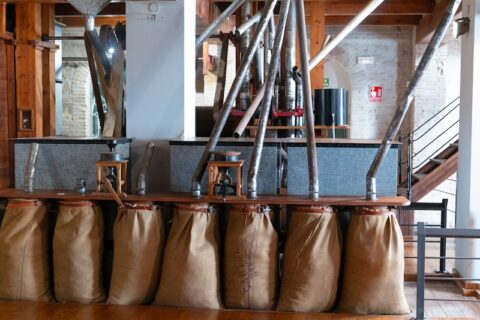 However, rice production has ebbed and flowed across the last 1,000 years with a dip in cultivation during the Reconquista in 1492 and some resurgence in the 18th century, however, never to levels of production during the reign of the Moors. Today rice is still grown in the Albufera National Park with rice fields in the Valencia region producing over 120,000 kilos of rice per year.
However, rice production has ebbed and flowed across the last 1,000 years with a dip in cultivation during the Reconquista in 1492 and some resurgence in the 18th century, however, never to levels of production during the reign of the Moors. Today rice is still grown in the Albufera National Park with rice fields in the Valencia region producing over 120,000 kilos of rice per year.
Valencian rice is of a number of varieties including Albufera, Bahai, Bomba, Gleva, Montsianell, Sarçat and Sendra. These range across textures from a smoother and creamier variety like Senia to the firmer Bomba.
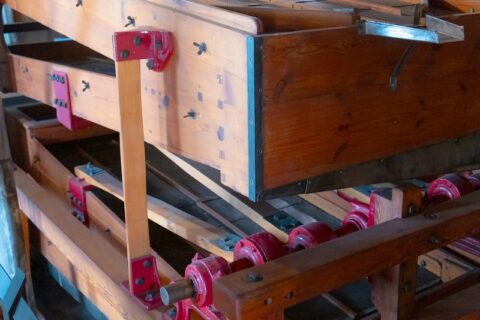 Most Valencian rice is grown today in the Albufera wetlands and is strictly regulated through the D.O. system managed by the ministry of agriculture (Denominación de Origin). The system was instituted in 2000 with the aim of certifying rice following strict standards comprising three varieties, Senia, Bomba and Albufera. Rice from Valencia with D.O. designation is packaged for sale with a numbered label that documents the producer and area of growth to ensure the quality of the rice.
Most Valencian rice is grown today in the Albufera wetlands and is strictly regulated through the D.O. system managed by the ministry of agriculture (Denominación de Origin). The system was instituted in 2000 with the aim of certifying rice following strict standards comprising three varieties, Senia, Bomba and Albufera. Rice from Valencia with D.O. designation is packaged for sale with a numbered label that documents the producer and area of growth to ensure the quality of the rice.
These details and histories are not part of the exhibit at the Museo de la Arroz, however. The museum focuses on the milling of harvested rice.
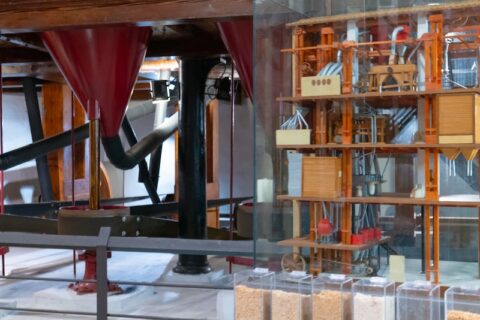 But that’s OK because the small museum in El Cabanyal is absolutely worth the trip. The museum is housed in a rice mill constructed in 1906 and that ran throughout much of the 20th century. The rice mill was one of modernity from the start being run with electricity and the tour emphasizes the role of mechanization in refining rice.
But that’s OK because the small museum in El Cabanyal is absolutely worth the trip. The museum is housed in a rice mill constructed in 1906 and that ran throughout much of the 20th century. The rice mill was one of modernity from the start being run with electricity and the tour emphasizes the role of mechanization in refining rice.
 Admittedly, the museum is a bit confusing at first. The ground floor is the start of the tour and begins with numbered pacards each with a QR code that leads to the audio guide (a good idea to take your phone and AirPods).
Admittedly, the museum is a bit confusing at first. The ground floor is the start of the tour and begins with numbered pacards each with a QR code that leads to the audio guide (a good idea to take your phone and AirPods).
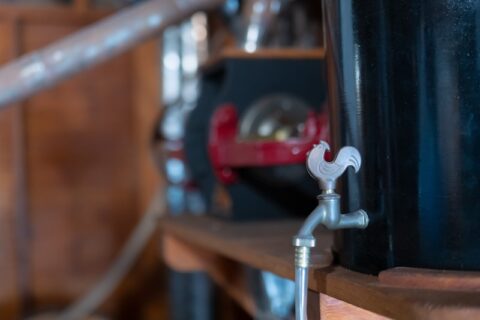
The tour spans four levels and encompasses the initial sorting and classification followed by transport to the 3rd floor via complex ducting and chain driven wooden boxes. The process of cleaning, hulling, whitening, classification, polishing, storage and packing moves between floors using these mechanized processes that were state of the art in the early 20th century.
Your tour should take about an hour if you follow the numbered placards and the audio guide. Given the care that has been taken to restore the mill and the machinery it is worth the time. The trip is valuable just to see the complicated antique machinery but also the craftsmanship that went into creating the massive engines, turbines and ducting.
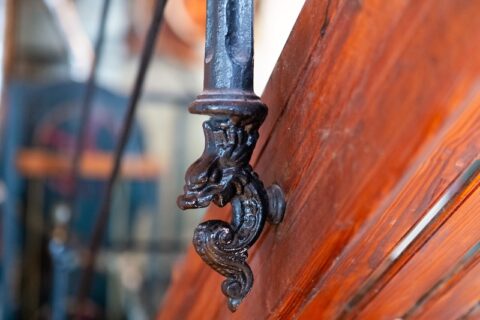
This isn’t confined to the massive yet beautifully elaborate motor and belt systems that drove the mill but subtle features such as valve knobs in the shape of roosters and stair stanchions with elaborate cast figures.
At a modest 2€ but free for children (1€ for reduced rates) a trip to the rice museum is a great experience later in the morning on a hot day as the perfect segue into a long, leisurely lunch of paella followed by a siesta. You will appreciate the beauty and heritage of Valencia rice culture. Not to be missed.
There is an audio guide throughout the exhibit. Here are the links in English to help you through the tour.
1. https://www.museodelarrozdevalencia.com/Qr/Mp3/MUSEU_ING_1-converted.mp3
2. https://www.museodelarrozdevalencia.com/Qr/Mp3/MUSEU_ING_2-converted.mp3
3. https://www.museodelarrozdevalencia.com/Qr/Mp3/MUSEU_ING_3-converted.mp3
4. https://www.museodelarrozdevalencia.com/Qr/Mp3/MUSEU_ING_4-converted.mp3
5. https://www.museodelarrozdevalencia.com/Qr/Mp3/MUSEU_ING_5-converted.mp3
6. https://www.museodelarrozdevalencia.com/Qr/Mp3/MUSEU_ING_6-converted.mp3
7. https://www.museodelarrozdevalencia.com/Qr/Mp3/MUSEU_ING_7-converted.mp3
8. https://www.museodelarrozdevalencia.com/Qr/Mp3/MUSEU_ING_8-converted.mp3
9. https://www.museodelarrozdevalencia.com/Qr/Mp3/MUSEU_ING_9-converted.mp3
10. https://www.museodelarrozdevalencia.com/Qr/Mp3/MUSEU_ING_10-converted.mp3
11. https://www.museodelarrozdevalencia.com/Qr/Mp3/MUSEU_ING_11-converted.mp3
12. https://www.museodelarrozdevalencia.com/Qr/Mp3/MUSEU_ING_12-converted.mp3
13. https://www.museodelarrozdevalencia.com/Qr/Mp3/MUSEU_ING_13-converted.mp3
14. https://www.museodelarrozdevalencia.com/Qr/Mp3/MUSEU_ING_14-converted.mp3
15. https://www.museodelarrozdevalencia.com/Qr/Mp3/MUSEU_ING_15-converted.mp3
16. https://www.museodelarrozdevalencia.com/Qr/Mp3/MUSEU_ING_16-converted.mp3
